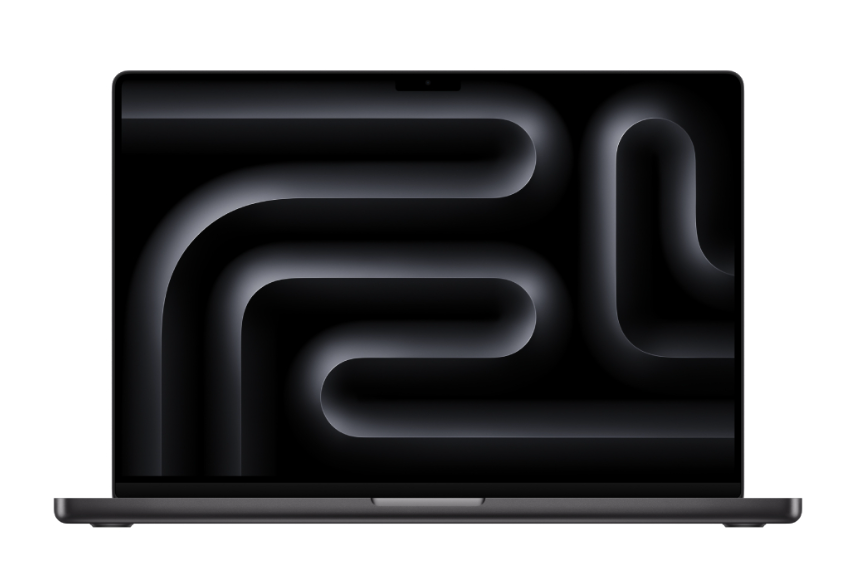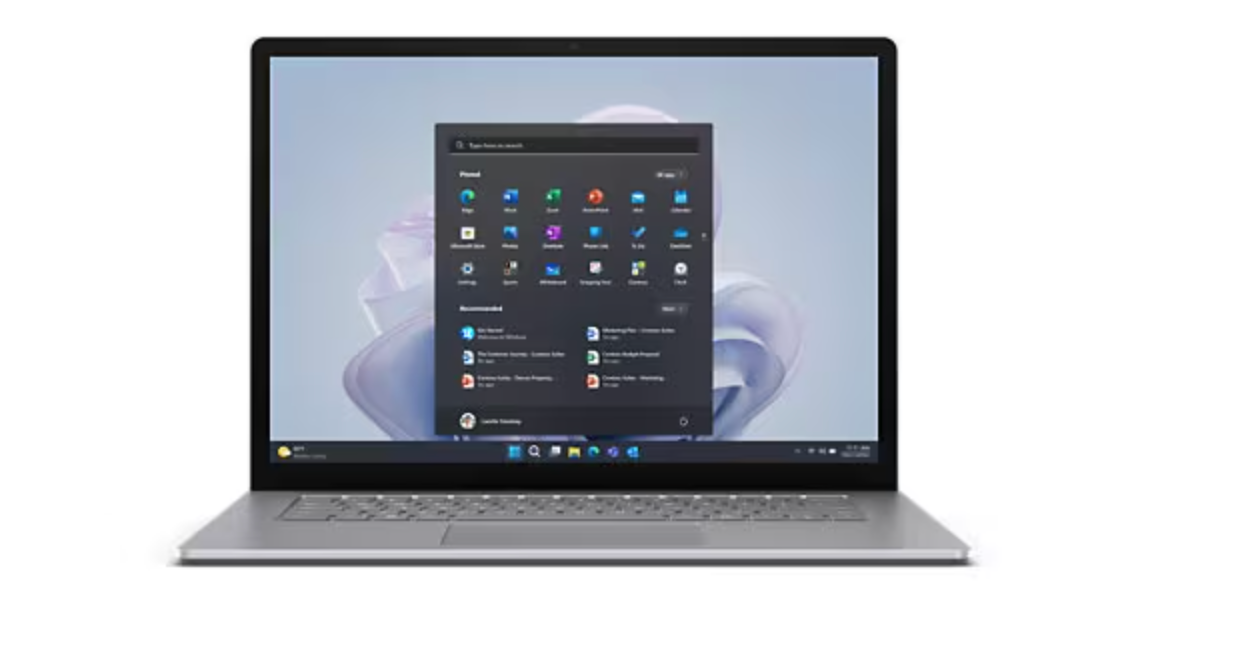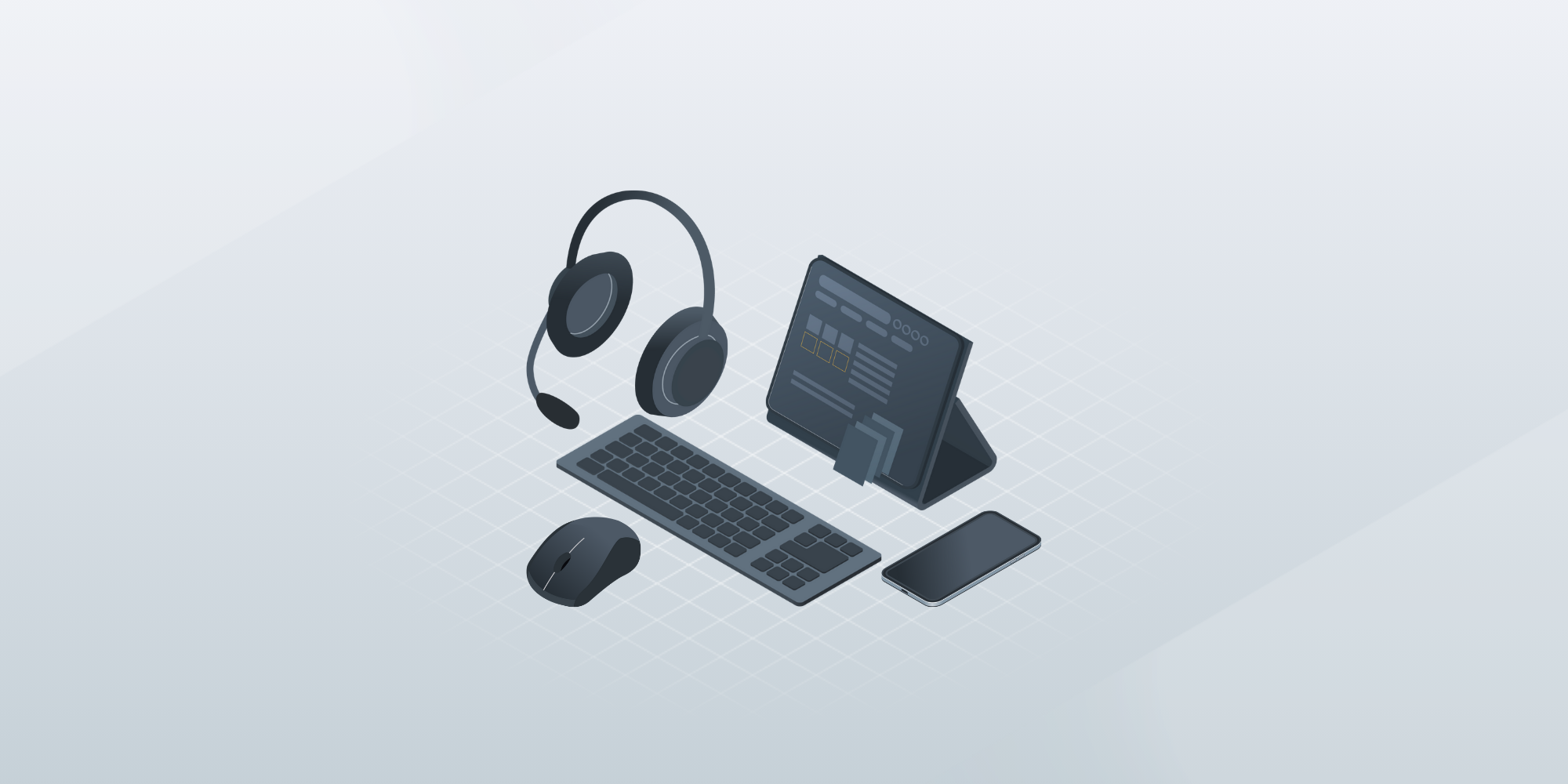Providing equipment for remote workers in a distributed world
 GroWrk Team
GroWrk Team
While hiring remote workers offers several benefits, such as reduced labor costs and access to better talent, providing equipment for remote team members is more complex than any company could have imagined.
Compliance issues, high costs for sending equipment across international borders, and supply chain problems hinder new employee onboarding times and growth.
To handle this logistics gap, GroWrk has developed remote work solutions that make providing equipment for your globally distributed team easy, safe, and efficient.
This article will discuss why providing remote workers with the right equipment is essential, how to do it, the type of hardware and software employees need, best practices, and why doing so in-house is so expensive for companies.

Why it's essential to provide the right equipment to remote workers
According to Forbes, about 16 percent of global companies in 2024 are fully remote, up 8 percent from 2021. The appropriate equipment to work from home is fundamental for preserving productivity and safeguarding data security. A comprehensive equipment policy ensures will beff are effectively equipped, boosting well-being and job satisfacfor workingroperly outfitting remote workers with the proper home office setup, including ergonomic office furniture, minimizes health risks and increases performance, making them feel valued and supported.
Additionally, an efficient system for work-from-home equipment requests streamlines logistics and resolves IT issues promptly. This strengthens the organization's support for its distributed teams and affirms its commitment to adapting to modern workforce needs, ultimately fostering a more productive and secure work environment.
Ensuring productivity and efficiency
Ensuring remote employees' productivity and efficiency is crucial for success. To achieve this, employers should provide the necessary equipment and tools to facilitate remote work. This includes providing a reliable laptop or desktop computer, a comfortable and ergonomic chair, a standing desk, and a laptop stand. Additionally, ensure that employees who work remotely can access high-speed internet connection, technical support, and a mobile phone for communication.
Employers should establish clear expectations and goals for remote employees, provide regular feedback and coaching, and encourage open communication. This can be achieved through regular virtual meetings, video conferencing, and instant messaging. Employers can ensure that remote employees are productive and efficient by providing the necessary equipment and tools and establishing clear expectations and goals.
Ways to provide IT equipment to distributed employees
When equipping remote teams with IT equipment, organizations have several strategies at their disposal.
Direct Provisioning
One common approach is directly providing work-from-home equipment. This method ensures that all employees receive standardized, company-approved devices and tools, maintaining consistency and compliance across the board.
Stipend
Another approach is to offer a stipend provision. This allows employees to purchase the necessary equipment within a predetermined budget on their own. This method allows employees to select devices that suit their preferences and work requirements. A stipend policy can boost morale and job satisfaction by giving remote workers a sense of autonomy in their home office setup.
Reimbursement
Alternatively, companies might opt for a reimbursement model, where employees purchase their own equipment according to specified guidelines and budgets and are reimbursed for their purchase. This flexibility allows staff to choose equipment that best suits their needs and comfort, potentially boosting morale and productivity.
Leasing
Another strategy involves leasing equipment, which can be cost-effective for businesses looking to provide high-quality technology without the upfront investment. Leased equipment can be easily updated or replaced, ensuring that employees can always access the latest remote work technology.
Device lifecycle management platforms
For a streamlined and efficient approach to equipping global teams, consider outsourcing equipment management to device lifecycle management platforms like GroWrk. With this innovative solution, IT and HR teams automate the entire IT device lifecycle, from procurement to disposal, significantly reducing costs and expediting onboarding.
With zero-touch onboarding, managers can send new hires pre-configured, MDM-enabled devices directly from the platform, ready to use on day one. This approach alleviates the manual procurement burden on IT teams and employees, making it ideal for companies with globally distributed teams.
GroWrk ensures devices remain updated, secure, and compliant with company policies. By leveraging these platforms, you can enhance IT operations, boost security, and deliver an exceptional experience for your remote workforce.
Work From Home Equipment Checklist
Creating an effective home office for remote work requires carefully selecting key components to ensure comfort and functionality. A strong, stable internet connection and a VPN are essential for maintaining network security and ensuring reliable access to corporate systems. When working remotely, this robust connectivity is crucial for supporting high video quality during video calls and is vital for seamless communication and effective collaboration with colleagues and clients.
Laptop and Computers for remote work
Providing high-performance IT equipment and remote work software and knowing how to set up laptops for remote workers is essential to facilitate productivity and ensure seamless operation across distributed teams. GroWrk offers top-tier models designed to meet various professional needs:
-
MacBook Pro 16-inch and 14-inch: Equipped with the new M3 Pro chip, these MacBook Pros offer 18 GB of RAM and impressive storage options of 1 TB and 512 GB, respectively. The 12-core CPU and 18-core GPU deliver outstanding performance and graphics capabilities, ideal for creative professionals and developers alike.

2. Lenovo ThinkPad X1 Carbon G10: This 14-inch model is powered by an i7-1270P processor with 32 GB of RAM and a 512 GB SSD, making it perfect for business professionals who require robust performance and reliability in their computing.

3. Microsoft Surface 5: With a 15-inch display, the Surface 5 is another excellent choice, featuring an i7-1265U processor, 32 GB of RAM, and 1 TB of storage. This device is well-suited for those who need a larger screen and substantial storage for complex projects.

4. Dell XPS 13 Plus 9320: This compact 13.4-inch laptop does not skimp on power, sporting an i7-1360P processor, 16 GB of RAM, and a 512 GB SSD. It's an excellent option for those who need a highly portable yet powerful device.

Essential home Office equipment

Providing essential office equipment is key to successful remote work. Providing items like quality monitors, adjustable desks, and ergonomic chairs ensures comfort and productivity. By equipping remote workers with the right tools, companies show their support and enhance employee satisfaction and efficiency.
Monitor
A high-quality monitor is key to reducing eye fatigue and ensuring employees do not have to strain their necks to see their work. Brands like Dell, HP, and LG offer adjustable monitors that are ideal for remote work setups. Models such as the Dell UltraSharp U2720Q, HP Z27, and LG 27UK850-W provide excellent resolution and ergonomic features. It's important that monitors can be adjusted for height and angle, allowing workers to set them at an optimal position to maintain a good posture without leaning forward or looking down.
Desk
Adjustable desks are crucial in an ergonomic office setup. Options such as standing desks or those with adjustable heights encourage movement and allow employees to change their working position throughout the day. Go for popular choices like Varidesk Pro Plus 36, Uplift V2 Standing Desk, and Flexispot EN1, which provide flexibility and ergonomic benefits. This variability helps prevent the stiffness and discomfort associated with prolonged sitting, promoting better circulation and muscle activity
Ergonomic chair
Properly supporting the spine is critical, and ergonomic chairs are designed to do just that. These chairs are adjustable to fit different body types and work styles, ensuring each user can maintain a naturally aligned posture. In 2025, some of the best ergonomic chair models include the Herman Miller Aeron Remastered, Steelcase Leap, and the Duorest D2.0W Airo, all offering advanced ergonomic features and customizable settings to suit diverse remote work setups.
Mouse and Keyboard
Investing in ergonomic keyboards and mice is important for comfort and preventing injuries like carpal tunnel syndrome. These devices help keep hands and wrists in a natural position during long work hours. Popular options include the Logitech Ergo K860 Keyboard and theMicrosoft Sculpt Ergonomic Mouse.
Printer or Scanner
For remote work setups, having a reliable printer or scanner is crucial for handling physical documents. Top models such as the HP OfficeJet Pro 9015e and Brother MFC-L2750DW offer robust features for printing and scanning needs, ensuring seamless office work from home.
External Hard Drives or Cloud Storage
External hard drives like the Western Digital My Passport and cloud storage solutions such as Google Drive provide reliable options for data backup and storage, keeping remote work data secure and accessible.
Laptop Stand
A good laptop stand can significantly improve ergonomics. Consider models like the Rain Design mStand or the Roost Laptop Stand for adjustable and sturdy support, enhancing comfort and productivity.
Noise-Canceling Headphones
For focused work and clear communication during video calls, noise-canceling headphones are essential. Popular choices include the Bose QuietComfort 35 II and the Sony WH-1000XM4, both known for excellent sound quality and noise cancellation.
Microphone and Webcam
High-quality microphones and webcams are vital for video conferencing. The Logitech C920 HD Pro Webcam and the Blue Yeti USB Microphone are top picks, offering superior video quality and audio clarity for remote communication.
Necessary software for remote work teams

Equipping remote teams with the right software is crucial for seamless collaboration and productivity. Essential tools include communication platforms, project management systems, and data security solutions. These software applications help remote employees stay connected, organized, and secure, ensuring efficient workflows and effective teamwork across distributed environments.
MDM software
For distributed teams, Mobile Device Management (MDM) software is essential. MDM solutions enhance operational flexibility by facilitating zero-touch enrollment and deployment across various operating systems. This type of software supports a robust security posture, ensuring that data remains protected and compliance standards are met, regardless of the employee's location. Popular MDM solutions include Jamf Pro and Microsoft Intune.
Antivirus solution
A reliable antivirus solution is crucial for protecting remote workers' devices from malware and cyber threats. It ensures data security and maintains the integrity of company information. Leading antivirus software includes Norton 360 and McAfee Total Protection.
Password manager software
Password manager software helps remote employees securely store and manage their passwords, reducing the risk of security breaches. It also simplifies access to various systems and applications. Top password managers include LastPass and 1Password.
Data security and protection
Data security and protection software are vital for safeguarding sensitive information and ensuring compliance with data privacy regulations. These tools offer encryption and secure data storage solutions. Notable options are Symantec Data Loss Prevention and Vera.
Screen recording software
Screen recording software is useful for remote training sessions, presentations, and documenting processes. It enables employees to capture and share their screens efficiently. Recommended products include Camtasia and Snagit.
Video conferencing software
Video conferencing software is essential for maintaining communication and collaboration among remote teams. It supports virtual meetings, webinars, and video calls. Leading platforms include Zoom and Microsoft Teams.
Document collaboration and sharing suite
Document collaboration and sharing suites enable distributed teams to work together on documents in real time, improving productivity and teamwork. Popular solutions include Google Workspace and Microsoft 365.
Project management software
Project management software helps remote teams organize, track, and manage their work efficiently. It provides tools for task assignment, progress tracking, and collaboration. Well-known project management tools are Asana and Trello.
The best practices for providing IT equipment for remote workers
To effectively equip your distributed teams, establish clear equipment policies, offer choices in ergonomic tools, and provide necessary technology like laptops and VPNs. Regularly updating these items and ensuring they meet security standards are crucial for maintaining productivity and safeguarding company data in a robust remote work infrastructure.
Avoid any compliance issues
Since 2020, 25 percent of businesses have covered a portion of the cost of home office equipment. Our research into remote companies also revealed that only 38% provided a WFH stipend or purchased laptops for their employees.
However, by the end of 2024, it became standard practice for companies to equip their remote workers with at least one laptop when they work with or have access to customer data.
The highest information security standards (SOC2, ISO 27001) prefer companies to own the equipment used by their employees to ensure remote work compliance and control the data that lives in those devices. It makes sense for distributed employees to have a unique work device in case their personal device is compromised.
Understand what your employees need
The first step is to make a checklist of remote work essentials your employees need to perform their jobs remotely. Things like a fast laptop, a strong stand, and a widescreen monitor should be standard. Employers have three options to provide the equipment: Purchasing new devices for employees, using current inventory, or offering a WFH stipend to cover associated expenses.
The most sustainable option is to use a third-party service like GroWrk to give company equipment to remote work teams so you do not take time away from their onboarding. Then, when they leave, they collect the equipment and give it to the next employee at no additional cost.
To speed up onboarding, send an equipment survey to determine what an employee is missing and compare that to your work-from-home equipment checklist. Your company must establish standards for work-from-home equipment, which can be outlined in an IT onboarding checklist.

Go through local provisioning requirements
The next step is to include anything their location legally requires. Since employment laws usually vary by jurisdiction, it is crucial that you fully understand the local laws that apply in their case. If two or more laws apply to the worker, your company should follow the one that's most generous to the remote worker.
Globally, many states are adopting detailed working legislation policies. For example, Spain and Turkey require employers to equip remote workers with the necessary equipment. New laws also require formal remote work policies between companies and their workers. It's becoming compulsory to provide equipment for working from home, reimburse additional expenses, and ensure a safe and healthy environment.

10 US states require employers to reimburse WFH employees for certain work-related expenses. California is the strictest, where anything the employee deems "necessary" has to be covered.
Continuing this trend, Croatia and Russia require businesses to compensate remote workers for all remote work expenses, including phone bills, utilities, and home equipment. Mexico also drafted a similar telework law for distributed teams.
Ensure equipment meets health and safety regulations
The employer's responsibility is to ensure that the tools provided to their remote worker and their workplace meet the required standards and safety regulations. Again, these vary from region to region. According to OSHA, employers are not required to inspect workplaces.
Employers must ensure safety because they can be held liable for any accidents caused by equipment, processes, or materials used by employees while working from home.

Keep in mind under UK H&S requirements; employers must provide ergonomic office solutions like adjustable monitors. Fire safety standards in the EU are stringent, and you need to use specific fabrics and foams.
Have a plan to maintain and retrieve equipment
Just like our health, equipment must be taken care of, or it risks breaking down. The company's responsibility is to create an agreement that requires scheduled remote work maintenance and trains employees to use equipment properly. The best way to do that is by having your remote worker sign an employee equipment agreement. This way, each party's responsibilities and what to do if there are issues with company-provided tools are established. For example, how to replace a device, file a complaint, etc.
Create a Work From Home policy
This remote work policy isn't just about how many days employees can work from home; it also helps avoid compliance issues and ensures stable employee performance.

Your remote work guidelines should answer questions such as:
-
Equipment needed to work from home
-
How often to upgrade or replace tools
-
How to use tools
The working-from-home policy should be published in your company knowledge database so employees can readily access it. This can be in a shared drive like Google or Dropbox or a virtual HQ like Notion.
Training and support for remote workers
Providing training and support for remote workers is essential for ensuring their success and productivity. Employers should provide comprehensive training on the necessary equipment and tools, including desktop computers, laptops, and mobile phones. They should also provide training on communication protocols, including video conferencing and instant messaging.
Why is providing remote workers' equipment so expensive?
Providing equipment for remote workers can be costly and complex. It involves more than just buying items; it includes approvals, delivery, and ensuring legal compliance, which can take time and may require hiring experts. Various departments, such as HR and IT, manage logistics and network needs, while purchasing departments handle vendor negotiations. International shipments add costs such as customs duties and potential delays. Quality equipment like good laptops and Wi-Fi routers is essential but not cheap. Additionally, unexpected expenses can arise if equipment is returned or contracts end.
In addition, there are times when things don't go as planned, such as when a remote employee returns equipment due to a faulty piece or when a contract runs out. You will have to cover these expenses.
GroWrk: a trusted solution for providing IT equipment for remote workers
The best way to address these challenges is to partner with a company that eases these pressures and helps you save time and money. GroWrk has a team that understands the needs of employees and the dynamic realities of a distributed company.
It doesn't matter where or how many remote workers you have; GroWrk can deliver laptops and other devices to over 150 countries. We offer an intuitive dashboard that can onboard or offboard employees in minutes. Our global network of vendors and warehouses bypasses customs taxes or shipping fees, so you can purchase from our catalog or store your inventory without worrying about additional costs.
With our end-to-end remote work management and WFH inventory management, you will never lose track of your hardware. Receive real-time notifications when devices need maintenance, are being shipped, or have been delivered.
Wrapping up
In today's distributed work environment, providing remote workers with the right equipment is no longer a perk but a necessity. GroWrk offers a comprehensive solution to these challenges, delivering high-quality equipment to remote teams worldwide. With our seamless service, you can focus on growing your business while we handle the logistics of providing and managing remote work equipment.
Ready to enhance your remote work infrastructure? Schedule a call with GroWrk today to learn how we can provide your distributed team with top-tier equipment and services.
Frequently Asked Questions
Do companies pay for laptops to work from home?
Yes, many companies pay their distributed employees for laptops. Providing laptops ensures all members can access company-approved remote work devices that meet specific security and performance standards. These standards are essential for maintaining productivity and safeguarding sensitive data in distributed work environments.
Do companies pay for home office equipment?
Yes, many companies provide or reimburse for home office equipment as part of their support for remote workers. This can include essentials like desks, chairs, and monitors. Policies vary by company, with some offering stipends or specific items as part of their remote work support to ensure employees have a functional and ergonomic workspace.
Can I write off office equipment if I work from home?
If you're self-employed, you can often write off home office equipment as a business expense on your taxes. For employees, the ability to claim remote work tax deductions for the equipment varies based on local tax laws and the specifics of your employment arrangement. It's best to consult a tax professional for advice tailored to your situation.
How do I retrieve equipment from remote employees?
To retrieve IT equipment, establish a work-from-home equipment policy and establish a clear process that includes providing prepaid shipping labels and packing instructions. Use tracking services to monitor returns and consider employing retrieval services to efficiently manage the remote work logistics. Remote management software can also secure devices until they are returned.






